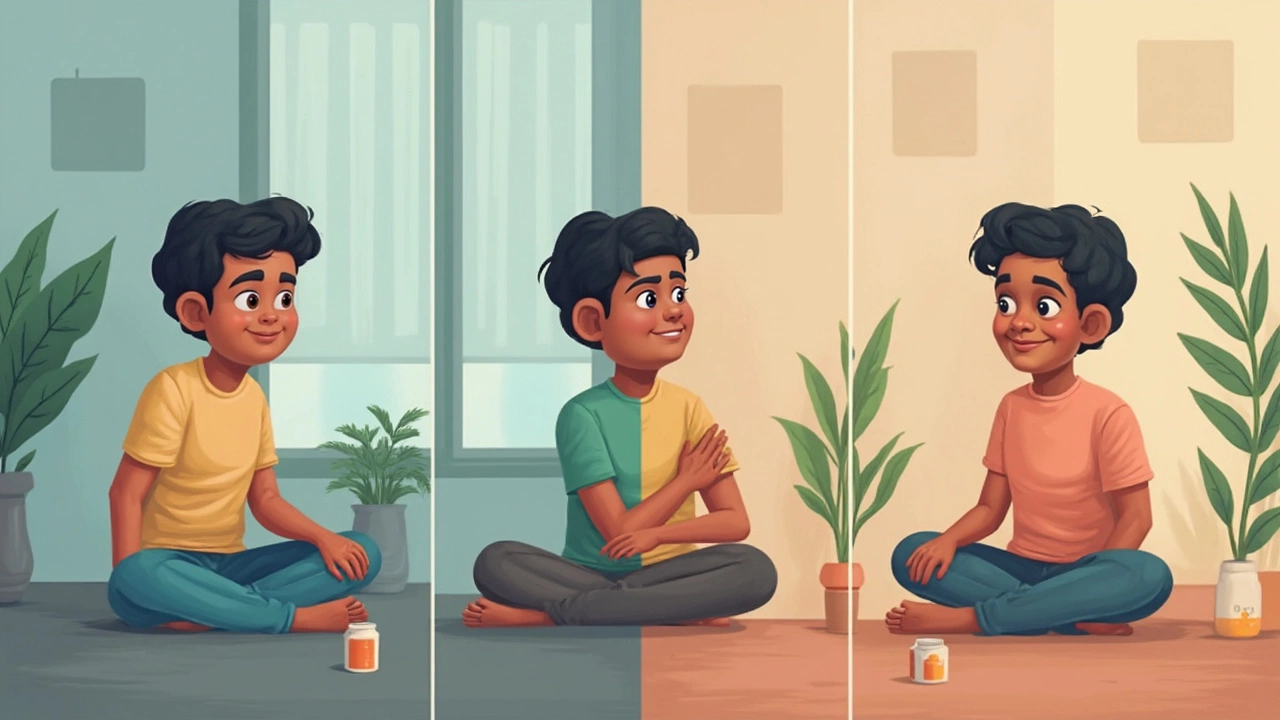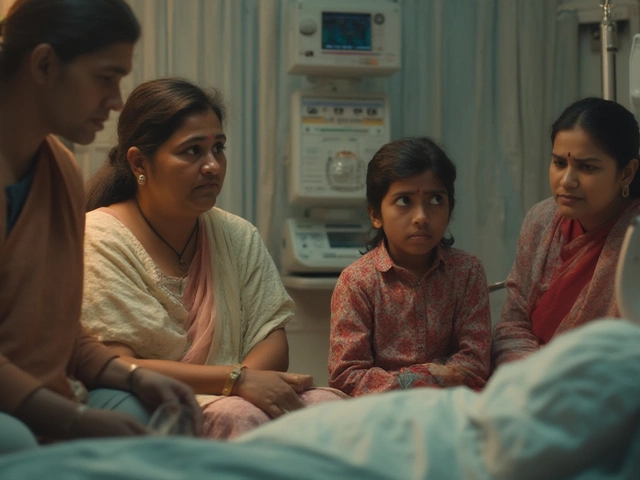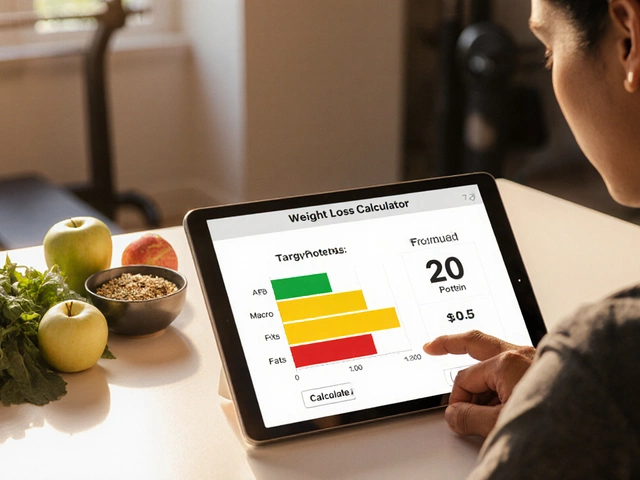The days right after chemo aren’t just physically rough—they mess with your head, too. Most people find that symptoms start kicking in a day or two after treatment, get worse on day 3 or 4, and then slowly start to let up. It’s like your body is hit by a delayed wave of side effects. If your mouth tastes like metal, you feel wiped out, and you can’t even look at your usual comfort food—that’s normal.
You might hear from others that “everyone reacts differently”—and that’s true. But there really is a typical pattern: nausea, fatigue, low appetite, brain fog, and sometimes even joint pain or weird skin changes. You’re not just being dramatic. These aren’t small side effects. They can leave you feeling like your body’s turned against you. Staying hydrated, eating small snacks, and just letting yourself rest can make a real difference, even if it feels like you’re not doing much.
If today is a chemo day or you just finished a round, knowing what might happen next takes away some of the guesswork. You don’t have to power through everything—sometimes it’s smarter to slow down and really listen to what your body needs.
- Why the First Few Days Are So Tough
- Common Symptoms and When They Peak
- Managing Nausea, Fatigue, and Other Side Effects
- Emotional Rollercoaster: Mental Struggles After Chemo
- Best Home Remedies and Friendly Hacks
- When to Ask for More Help
Why the First Few Days Are So Tough
The first few days after chemo hit hard because that's when drugs start doing their job—attacking fast-growing cancer cells, but also hitting healthy cells by mistake. The cells in your gut, mouth, and bone marrow are especially easy targets, which is why you feel the worst symptoms so quickly. Your immune system takes a dip right away, so you get tired, weak, and all-around off. Some folks even run a fever; that means your immune defenses are down.
Doctors expect side effects to show up fastest in the first 48 to 72 hours. It’s not random—certain chemo drugs trigger nausea within 6 to 12 hours, while others cause "delayed nausea" that shows up on day 2 or 3. Fatigue also ramps up within a day or so after treatment, since your body is using a ton of energy to repair the damage. Here’s a quick look at how symptoms tend to pop up:
| Symptom | Typical Onset (Hours after chemo) | When It's Worst |
|---|---|---|
| Nausea/Vomiting | 6-48 hours | Day 2-3 |
| Fatigue | 24-48 hours | Day 2-4 |
| Mouth Sores | 1-5 days | Day 3-7 |
| Low White Blood Cell Count | 7-10 days | Up to 2 weeks |
You don’t just feel tired; the chemo itself can mess with your taste buds, make simple foods taste gross, or totally mess with your appetite. Water can even taste like metal. Movement feels harder. The trick is doing what you can to make these days easier. Hydration, light snacks, and extra sleep aren’t just comfort—they’re survival tools.
Your first reaction might be to “push through it,” but rest is your lifeline in this window. This is when your body’s fighting the hardest fight, so don’t be shy about saying no to chores or visits. Let people help you. That's a big part of getting through the chemo recovery grind after treatment.
Common Symptoms and When They Peak
The hardest days after chemo usually follow a pattern—and knowing this helps. The key side effects don’t show up instantly. They tend to build over 24 to 72 hours after getting your infusion. The timing depends on your chemo drugs, but here’s what most people run into during those first awful days post-treatment.
The classic chemo symptoms everyone dreads are:
- Nausea and vomiting – This usually hits hardest between 1 and 3 days after chemo. For a lot of people, day 2 can be the worst. Meds can help, but sometimes you just feel green all day.
- Fatigue – It’s that heavy, drained feeling where you just want to nap but might still feel tired after resting. Most folks report it peaking around days 2 to 4.
- Appetite changes – Food can taste off, or you may not want to eat at all. Taste changes and mouth sores also hit around day 3.
- Brain fog (“chemo brain”) – Trouble focusing or remembering little things, which usually gets bad by the third or fourth day.
- Low blood counts – You won’t feel this right away, but your infection risk rises between days 7 and 10 when your white blood cells dip.
Other things like constipation, diarrhea, or weird skin reactions can also pop up, but the big ones above are almost universal. Here’s a simple chart to show when the main symptoms usually hit:
| Symptom | When It Starts | When It Peaks | When It Improves |
|---|---|---|---|
| Nausea/Vomiting | Within 24 hrs | Day 2-3 | Day 4-5 |
| Fatigue | Day 1-2 | Day 2-4 | Day 5-7 |
| Appetite Loss | Day 2 | Day 3-4 | Day 5+ |
| Mouth Sores | Day 3 | Day 4-6 | Week 2 |
| Low White Blood Cells | Day 5-7 | Day 7-10 | Day 14+ |
If you notice anything way out of this pattern—like a high fever or pain that won’t quit—get in touch with your care team right away. These days are tough, but tracking when the worst symptoms hit can help you plan when you really need rest, reliable snacks, or a buddy to hang out just in case.
Managing Nausea, Fatigue, and Other Side Effects
Nausea is probably the biggest complaint in the first few days after a chemo session. Medications called antiemetics are your first line of defense—if the doctor gave you a prescription, take it at the times they recommend, not just when you feel sick. Don’t tough it out; it usually gets worse when you wait too long. Some folks swear by snacking on salty crackers, sipping on ginger tea, or even just eating cold foods, because strong smells can turn your stomach.
Dealing with fatigue? It’s more than just feeling tired—it’s like every battery in your body died at once. Pushing through it doesn’t work; you’ll end up feeling worse. The trick is to rest often, but don’t park yourself in bed all day unless you absolutely have to. Short walks, even just around your home, actually help fight off that ‘dead weight’ feeling. Prioritize things that matter and let go of chores that just aren’t worth the energy right now.
With appetite changes, try to eat small, high-protein snacks every few hours instead of forcing down big meals. Find what doesn’t turn your stomach—some people do better with cold yogurt, fruit, or even popsicles. Hydration matters more than most realize. Sucking on ice chips or having water bottles at every corner of your home makes it easy to sip throughout the day.
Other common side effects can surprise you: mouth sores, constipation, or even weird tastes. Try gentle mouth rinses with baking soda and water. For constipation, the simple move is upping your fiber if you can tolerate it, and staying hydrated. Ask your care team about any side effect that lasts longer than a few days or keeps you from eating and drinking.
- Take your meds as prescribed—don’t wait for side effects to get bad.
- Stock up on easy snacks and bland foods—things like crackers, toast, and bananas.
- Rest is non-negotiable, but feel free to get up for short stretches or a change of scenery.
- Keep in touch with your chemo recovery team—they want to hear about what’s working or not.
When in doubt, listen to your body. None of these side effects mean you’re failing or weak; they’re just part of how your body reacts to powerful medicine.

Emotional Rollercoaster: Mental Struggles After Chemo
The hardest days after chemo mess with your mind almost as much as your body. Your mood can swing wildly, and even people who’ve always been positive might find themselves anxious, sad, or downright angry for no clear reason. This is normal, and it’s not a sign of weakness. Your brain’s dealing with a lot—from toxic meds to messed-up sleep and just the general stress of fighting cancer.
Most folks don’t expect the emotional fallout, so when it hits, it’s easy to feel blindsided. Depression and anxiety are common during these days. One study showed up to 45% of people on chemo reported feeling depressed, while about 40% felt intense anxiety, especially in the first week after treatment. It’s not just about feeling “down”—it’s trouble finding motivation, getting irritable over small things, or suddenly feeling alone, even with support.
Here’s a table that breaks down some stats on mental struggles people report after their chemo recovery kicks in:
| Symptom | How Common (First Week After Chemo) |
|---|---|
| Depression/Low Mood | Up to 45% |
| Anxiety/Panic | About 40% |
| Insomnia | Over 50% |
| Feeling Isolated | 30-40% |
If you’re suddenly crying at random moments or can’t focus on anything for long, that’s not just you being emotional—it’s part of how chemo hits your nervous system. Cancer treatment can even change brain chemicals like serotonin and dopamine, which hack away at your mood and motivation. Sleep problems only make things worse.
It helps to share what you’re feeling with someone who gets it—maybe another patient, a cancer support group, or a counselor. If talking seems tough, even writing things down can give your mind a break.
- Don’t push yourself to “cheer up” or act normal—give yourself time.
- Keep routines simple. Just having a regular sleep/wake time, and short walks, can stabilize your mood.
- Ask your medical team about support resources. Many clinics offer free counseling or support groups.
- Let friends and family know how to help—sometimes you just need company or distraction.
If these feelings totally take over, or you think about hurting yourself, get real, professional help right away. Mental health is just as important as physical health after chemo—and it’s okay to say you need backup.
Best Home Remedies and Friendly Hacks
Coping with chemo side effects is like juggling—sometimes you just need a few good tricks up your sleeve. While everyone’s experience is individual, certain home remedies and practical hacks work for a lot of people. Most of these come straight from patients who’ve been through it, not just doctors.
Feeling sick to your stomach? Many folks swear by ginger—ginger tea, ginger candies, or even ginger in smoothies. Peppermint tea is another go-to. Crackers and dry toast are classic for a reason—they’re easy on the stomach and can help when nothing else sounds good. You might also find small, frequent meals help keep nausea down. Cold foods and drinks can work better than hot ones, especially when nothing smells right.
Fatigue is huge after chemo. Don’t force yourself to push through. Instead, try power naps (20-30 minutes tops) and stick to a loose routine. Fresh air helps a lot—even sitting near an open window or spending a few minutes in the sun. Hydration is key: water, diluted juices, or electrolyte drinks (skip ones loaded in sugar). Set a timer to sip every 20-30 minutes.
For mouth sores or that weird metallic taste, rinse with a mix of warm water, baking soda, and a little salt (a teaspoon of salt and a teaspoon of baking soda in a quart of water). Avoid citrus, spicy foods, or anything rough like chips. Using plastic utensils instead of metal can help with that metallic taste, too.
Here are a few more friendly hacks that actually make things easier:
- Keep snacks by your bed—sometimes energy crashes happen out of nowhere.
- If you get cold easily, layer up; soft socks or a cozy hoodie are lifesavers.
- Save your big tasks for the time of day you feel most alive, even if it’s only 20 minutes.
- Gentle movement like stretching or short walks can help with joint pain and energy (but listen to your body!).
- Keep a notebook handy for questions, symptoms, or just venting your frustrations.
Some simple swaps make a difference, too. Switch out strong-smelling soaps or cleaners for unscented versions—they can mess with your sense of smell and make nausea worse. Use a humidifier if your skin or nose feels super dry.
Ever wondered which symptoms hit hardest and when? Here’s what patients typically report:
| Symptom | When It Peaks After Chemo |
|---|---|
| Nausea | 24-72 hours |
| Fatigue | 48-96 hours |
| Mouth Sores | 5-10 days |
| Appetite Loss | 48-72 hours |
| Changes in Taste | 24 hours to 2 weeks |
The main thing to remember: you don’t have to tough it out alone. Lean on small, proven tricks and ask others what’s worked for them. Home hacks won’t fix everything, but they really do take the edge off the hardest days of chemo recovery.
When to Ask for More Help
No one expects you to handle all the toughest days after chemo alone. Sometimes, the usual stuff like sipping water and snacking just isn’t enough. But how do you know it’s time to call for backup? There are some signs and facts you shouldn’t ignore.
- High fever (above 100.4°F or 38°C): This could be an infection, and chemo tanks your immune system.
- Chills, shaking, or sweating with no reason.
- Trouble breathing that won’t go away with rest.
- Severe or sudden pain, especially in the chest, stomach, or head.
- Bloody vomit, pee, or poop. Even a hint of this is a big deal.
- Nonstop vomiting or diarrhea (more than 24 hours), meaning you can’t keep fluids down at all.
- Extreme weakness to the point you can’t get out of bed or do basic things.
- New confusion, trouble thinking or staying awake.
If you see any of these, call your doctor or cancer care team quickly. Don’t wait to see if things get better on their own.
Here’s a quick look at some warning signs and what they might mean:
| Warning Sign | What It Can Mean | Action |
|---|---|---|
| High fever (100.4°F+) | Possible infection | Contact care team ASAP |
| Unable to eat/drink for 24+ hours | Dehydration, severe side effect | Call your doctor |
| Shortness of breath, chest pain | Possible reaction or clot | Go to ER or call 911 |
| Severe confusion or sleepiness | Electrolyte imbalance, infection, or reaction | Seek immediate care |
A lot of folks try to tough it out, thinking someone else has it worse. That’s not smart when you’re dealing with chemo recovery. Your doctors want updates, even for smaller changes if you’re worried. If you’re not sure, never be shy to pick up the phone or message your nurse navigator. That’s what they’re there for.
And if you’re just feeling really down or anxious, mental health support counts as “asking for help” too. There’s zero shame in saying you’re not ok—sometimes a counselor or support group makes those rough days less lonely, which is half the battle.





